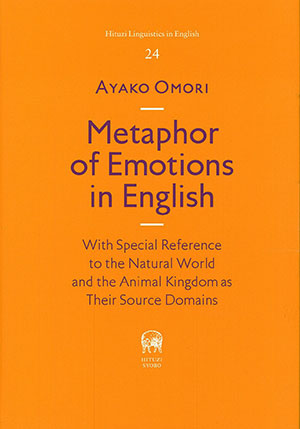2015年2月刊行

Hituzi Linguistics in English No.24
Metaphor of Emotions in English
With Special Reference to the Natural World and the Animal Kingdom as Their Source Domains
大森文子 著 Ayako Omori
菊判上製 218頁 定価9,500円+税
ISBN 978-4-89476-740-9
ブックデザイン 白井敬尚形成事務所
 |
Hituzi Linguistics in English No.24 Metaphor of Emotions in EnglishWith Special Reference to the Natural World and the Animal Kingdom as Their Source Domains大森文子 著 Ayako Omori 菊判上製 218頁 定価9,500円+税 ISBN 978-4-89476-740-9 ブックデザイン 白井敬尚形成事務所 |